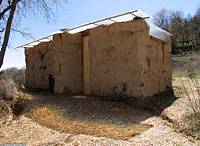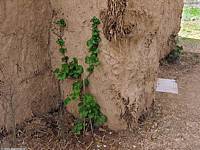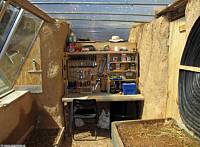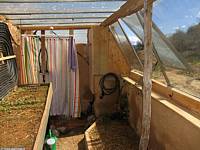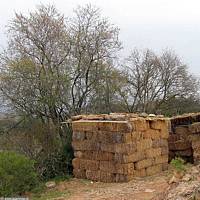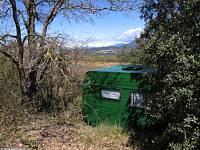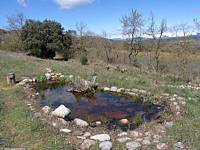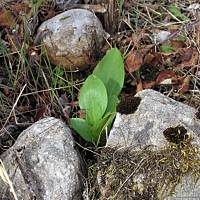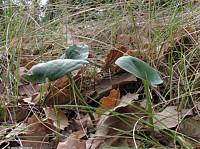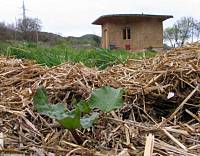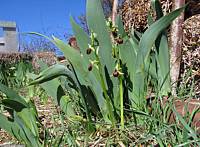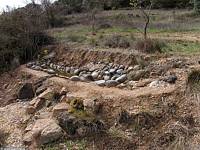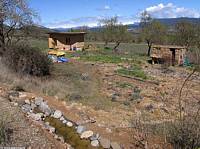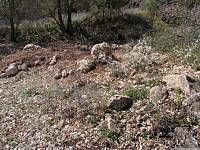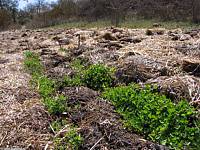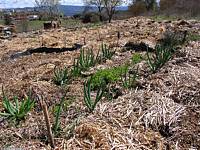|
|
Nature
Switched On
|
|
|
introduction |
2010 April 4 to 7
I have been busy with the finishing touches of some of the many
“buildings” on the terrain, which together form almost a kind of
colony now.
|
The solar greenhouse: not exactly an
Ecocathedral but perhaps an
Ecochapel? |
|
Hydrangea petiolaris on the north side of the
greenhouse. It prefers relatively shady places. 6 Apr10:25 |
||
|
Greenhouse interior. The sown vegetables are doing fine. 4 Apr 12:15 |
Workbench. The aluminium sticks supporting the roof (from our old caravan) stand wind and rain well. 4 Apr 12:18 |
|
|
The roof of the `'transformer station' with the controllers and
batteries of the solar panels needed some
kind of shading to prevent a greenhouse effect by |
||
| The
transformer station in the extreme south-east corner of the terrain. 7 Apr 11:30 |
||
|
Our old caravan
has started its fourth life, this time as a wildlife
observation shelter alias guest house alias store room. It received
a
|
||
|
The Holm oak (Quercus
ilex) on the right and the Portuguese Oak (Quercus
faginea) on the left will offer a nice shade in summer. 4 Apr 11:56 |
|
|
|
||
|
Sprouting Turk's-cap lily (Lilium martagon). 6 Apr 10:23 |
. | |
|
Sprouting Italian Lords-and-Ladies (Arum italicum)
on the wood border. 6 Apr 10:16 |
Sprouting Rhubarb(Rheum
rhabarbarum). Popular in northern Europe for its edible red stems. 7 Apr 11:02 |
|
|
Orchids are doing fine with many flowering Ophrys sphegodes and even more numerous lushy rosettes of Orchis purpurea. |
||
|
Early
spider orchid (Ophrys sphegodes)
under the protection of Iris germanica on the
border of the vegetable garden. 4 Apr 11:25 |
||
|
In the third pond (working as a filtering drain for the solar
shower) I planted Valeriana officinalis and Primula
veris, which I hope will proliferate (being natives) as they
|
||
|
The third pond, taking the water from the solar shower to the
vegetable garden, with the planted Primula veris at
the back. 6 Apr 10:06 |
||
|
Some of the brambles on the left
were taken away to get better views on the visiting birds of the
pond, but alas, also the Natterjacks will be heard better..
4 Apr 11:58 |
||
|
In the corner
at the entrance of the terrain I transformed
three heaps of debris,
of which the better stones were used for the foundation of the
garden house, into a rock garden. As usual and similar to the
approach of the recently installed third pond, I prefer to work
quite intuitively without detailed plans, doing jus |
||
|
Rock corner near the entrance to the terrain. The white flowering Blackthorn (Prunus spinosa) graciously mixes in with the stones. 4 Apr 12:08 |
||
|
Of the vegetable garden it is worthwhile to mention three perennials
who are amazingly growing on these early spring days, when
temperatures hardly pass 17 C. Trifolium repens and
Lotus corniculatus are green fertilizers and my
experimental plan is to have them grow all over the vegetable garden
with the vegetables sown into them (with the occasional mowing,
which they support well).
|
||
|
Trifolium repens (r) and Lotus
corniculatus (l) sown one year ago. 4 Apr 11:39 |
|
|
|
introduction
|
|
